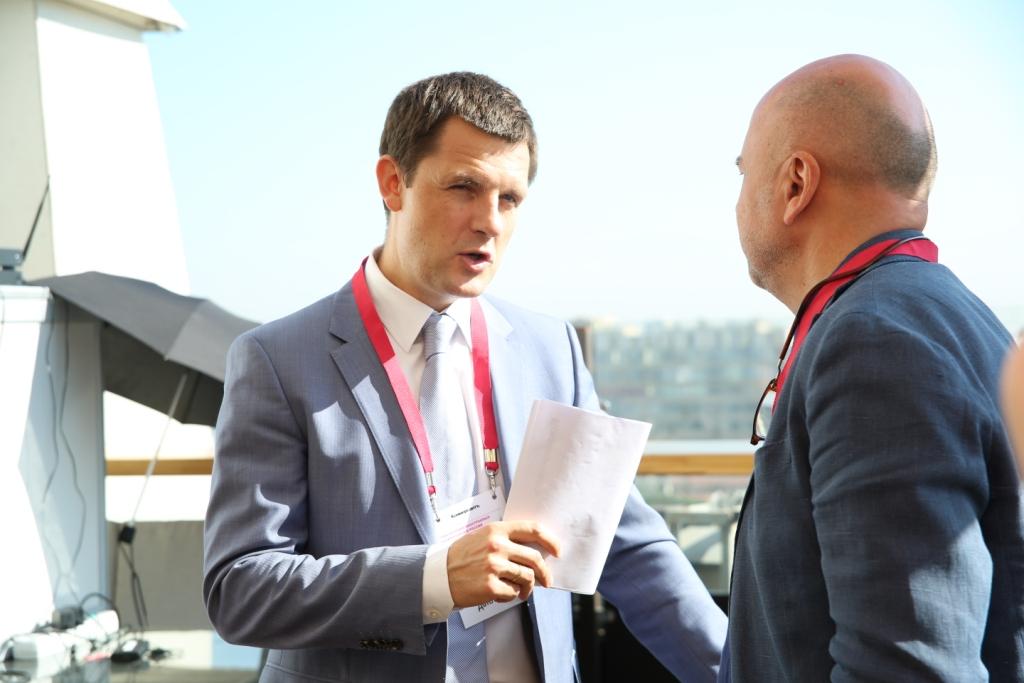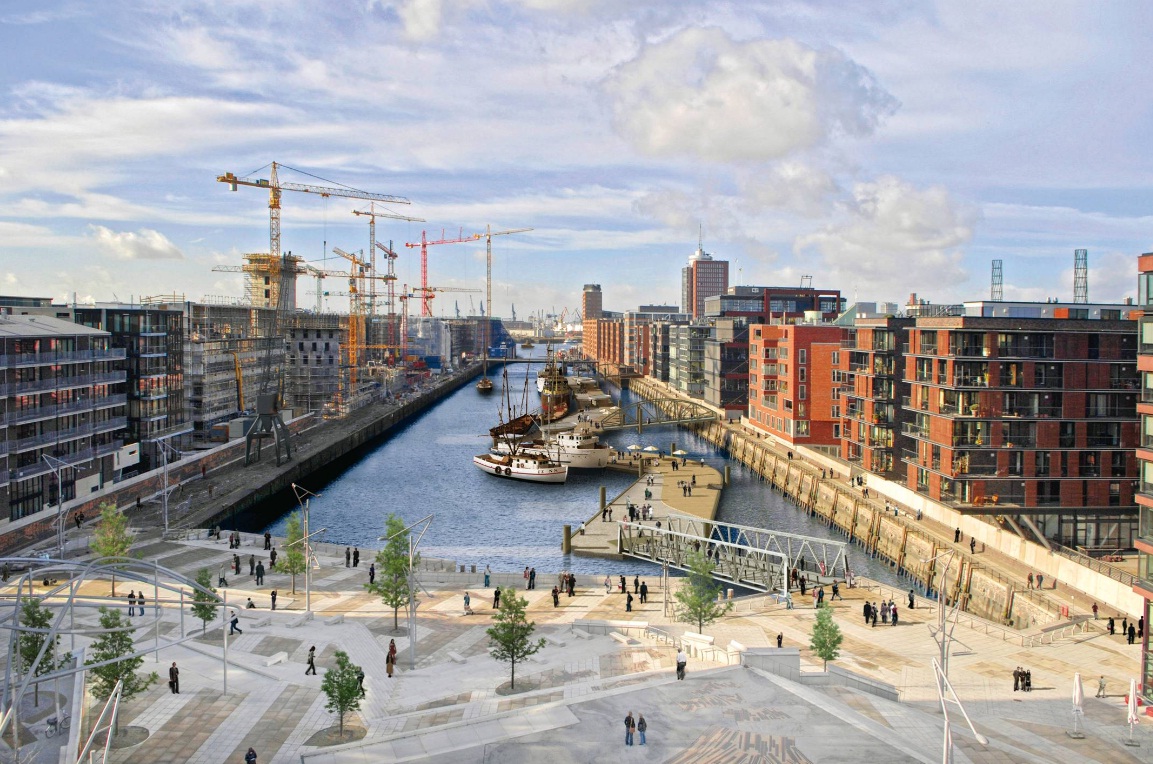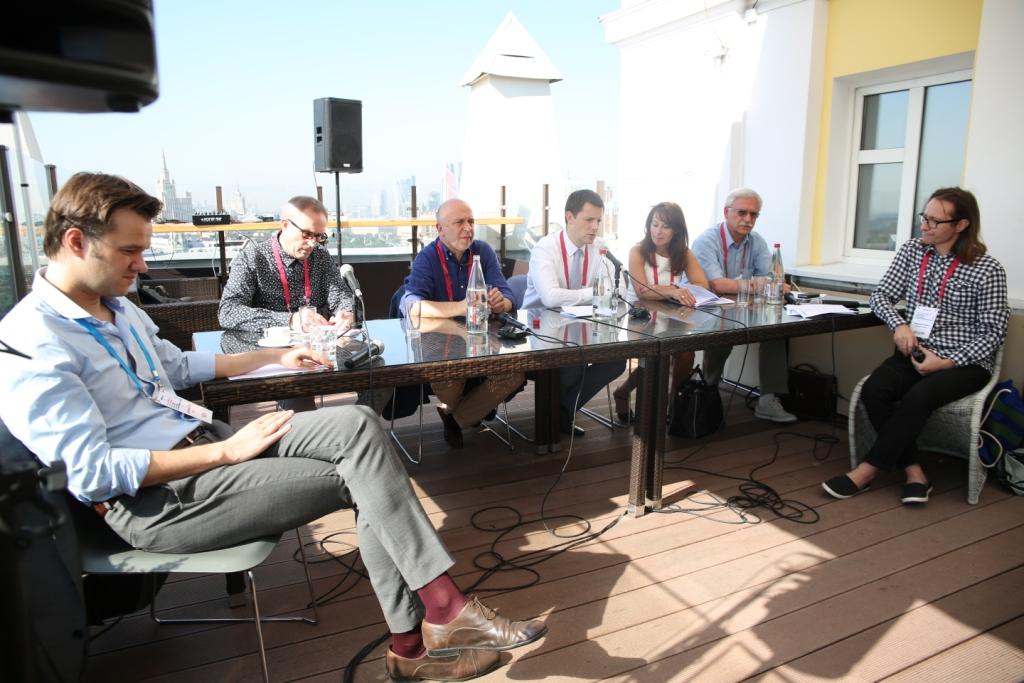Discussion about architectural competitions at the Kommersant business brunch

The first business brunch in a series of events organized by the Kommersant publishing house under the general theme of “Development of Moscow: a view from above” was dedicated to the competition that started the day before on the riverside areas of the Moscow River, as well as the practice of competitive design planning in general. The discussion was attended by the Chief Architect of Moscow, Sergey Kuznetsov.
The competition that was announced on the previous day on the concept of riverside areas in Moscow, according to Sergey Kuznetsov, is an important milestone in its development of urban planning, since in the last half century namely the absence of a relevant relationship to the river as an urban development axis in the years of rapid industrial growth, according to him, was one of the two main drawbacks on par with mass panel buildings.

“You cannot say that the Moscow River has never been considered as valuable to the city. There was an extensive project of developing embankments, which ran parallel to the implementation of the master plan in 1935,” noted Kuznetsov. “It was then that the river became an important site, a place of high-quality architecture.”
However, during all subsequent decades the river remained an insufficiently and irregularly utilized area outside the historic center. The present contest is intended to fix this. Yet in contrast to the 1930s, today a unified concept of the river is more difficult to implement, given the numerous owners. However, the chief architect believes that many of them are willing to develop; it is another thing that the city until now did not have a unified plan of how to develop. “We need to get a ‘road map’ of the river, and this will be a guide for the future development of these areas,” said Sergey Kuznetsov. The city can’t stand a vacuum, and if you do not start now to develop these areas properly, they will do so spontaneously, and this will hardly benefit the city.
Today programs for conceptualizing water is a good mode for urban development of megapolises and according to Kuznetsov, there are many positive examples where the development of the river comes as part of a larger picture, such as in New York, Hamburg, Berlin and London. In particular, the German experience in the development of industrial zones on the water has been studied at the concept stage of the ZIL territory, noted Sergey Kuznetsov. “The steps in the project implementation should always derive from the structure of the water, specific water-related characteristics and logistics, and an understanding of how to construct embankments,” said the chief architect.

The Moscow River competition is perhaps one of the most significant out of twenty that the city held in the past two years. The majority of them achieved a result, noted Sergey Kuznetsov.
“I would not say that it is 100 percent, but contests have decisively proved to be a more effective practice than when the architect works with a singular area.”
In particular, it has become evident in the quality of the projects at the conceptual stage. According to Kuznetsov, competitions have become an excellent platform for expression, communication with the professional and the general public, they popularize architecture as an institution, are a tool to create a competitive environment and a professional lift for young architects. At the same time, the main goal — to make competitive practice not only an opportunity for architects to show themselves, but also to implement projects — according to the chief architect, at this point is not always achieved.
The question of accountability in the implementation of competition results is “our sore spot,” pointed out Sergey Kuznetsov, “we are still learning how to turn this result into a product.”
The chief architect believes that the reasons for this in particular lie in that competitive practice is still not legally formalized. Furthermore it is obvious that there is a “massively low level of accountability in the implementation of the product, including on the part of the customer,” said Kuznetsov.

However, competitions already have become a hallmark of quality new urban policy and citation, and the resonance of this process is quite high. Sergey Kuznetsov also noted that it is impossible to develop a universal method of architectural competitions, but for the majority the two-stage procedure with shortlisting portfolios performed well and will be applied in the future.
The discussion, organized by the Kommersant publishing house in the summer series of business brunches on the “roof” of the Peking Hotel, was also attended by Andrey Gnezdilov, chief architect of the Scientific Research and Design Institute of the General Plan of the City of Moscow, Martin Stockley, a leading expert in urban engineering and public spaces, Citymakers, a member of the committee on urban regeneration and transport of Bath, United Kingdom, Borina Andrieu, Director at WILMOTTE & ASSOCIÉS SA, Dina Dridze, deputy chief architect of the Scientific Research and Design Institute of the General Plan of the City of Moscow, and others.
See more information about the Moscow River competition
- Tags:
- competitions |
- Moscow River






